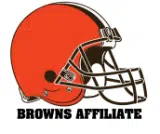Tom Brady played behind an abysmal offensive line and rushing attack during his rocky final season in Tampa Bay, but winning eight games was enough for the legendary quarterback to capture the lowly NFC South and receive one more postseason appearance before retiring for the second time.
With Brady gone, the NFC South entered the offseason with Tampa Bay’s Kyle Trask, New Orleans’s Taysom Hill, Carolina’s Matt Corral and Atlanta’s Desmond Ridder atop the QB depth charts across the division. Obviously, the list of possibly the worst collection of starting quarterbacks ever for a division made the rounds on social media, but there’s now a better QB1 graphic with free agency and the draft in the rearview mirror.
No. 1 pick Bryce Young landed in Carolina, the Saints signed prized free agent Derek Carr and the Buccaneers added Baker Mayfield to compete with Trask. Ridder remains atop the depth chart in Atlanta, but the Falcons might have put him in a position to succeed with their many notable offseason moves.
The NFC South appears much improved in 2023 after the four teams made upgrades throughout the offseason, and it would be a surprise if the division winner is under .500 for the second consecutive season.
It’s an open and competitive division, but don’t expect a deep postseason run from any of the teams.
Let’s take a closer look at the NFC South by grading the offseason moves made by the Falcons, Panthers, Saints and Buccaneers.
Carolina Panthers
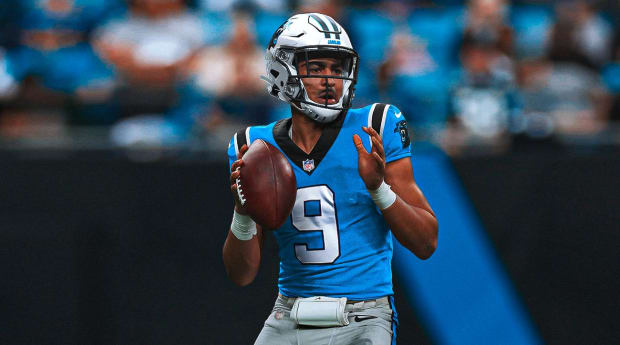
Kirby Lee/USA TODAY Sports. Illustration by Bryce Wood.
Key additions: S Vonn Bell, WR DJ Chark, TE Hayden Hurst, DE DJ Johnson, WR Jonathan Mingo, RB Miles Sanders, WR Adam Thielen, DT Shy Tuttle, QB Bryce Young
Key subtractions: RB D’Onta Foreman, WR DJ Moore
Where they stand: After a busy free agency, the Panthers might have added the final piece to their rapid rebuild with Young, the No. 1 pick known for reading defenses and extending plays. Carolina made it a priority to return its entire starting offensive line from last season, re-signing former Baltimore center Bradley Bozeman, who impressed the team in 2022 after agreeing to a one-year contract. The Panthers added new faces to the skill positions, too. An offensive trio of Sanders, Thielen and Hurst might not strike fear in opposing defenses, but it’s enough to make Young comfortable throughout his rookie season. Chark will provide speed for the receiving corps, and perhaps Mingo, the promising second-round pick, will develop into the No. 1 option by the end of the season. Carolina also built around its defensive core of Brian Burns, Derrick Brown and Jaycee Horn by adding Tuttle, Bell and Johnson.
Projected win total: 7.5
Odds to win the NFC South: +330
Final grade: B+
There are concerns with Young because he lacks ideal size for the position (5’11” and 194 pounds), but the Panthers deserve plenty of credit for quickly forming a quality roster to allow him to find his footing during his rookie year. But Carolina will need Mingo to make an immediate impact as a versatile 6’1″ playmaker, or this unit will be hurting for a downfield threat. With a surging defense and a quality staff led by new coach Frank Reich, don’t be surprised if Young leads the Panthers to a division title in his first season.
Atlanta Falcons
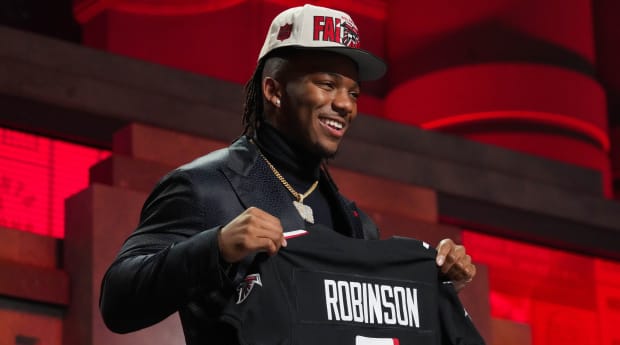
Kirby Lee/USA TODAY Sports
Key additions: S Jessie Bates, OL Matthew Bergeron, DE Calais Campbell, OLB Bud Dupree, LB Kaden Elliss, OLB Zach Harrison, WR Mack Hollins, CB Jeff Okudah, DT David Onyemata, RB Bijan Robinson, TE Jonnu Smith
Key subtractions: QB Marcus Mariota, CB Isaiah Oliver
Where they stand: Atlanta addressed many defensive needs during free agency, which featured the signing of Bates to aid cornerback A.J. Terrell in the secondary. The trade for Okudah could pay off if the 2020 No. 3 pick takes advantage of his fresh start to possibly give the Falcons a quality cornerback duo. The defensive front should improve with a revamped unit of Dupree, Elliss and Onyemata to assist defensive end Grady Jarrett. For the draft, the team strengthened the dynamic rushing attack with its first two picks, Robinson and Bergeron. Robinson’s arrival will give the Falcons a standout trio with wide receiver Drake London and tight end Kyle Pitts. They also added reliable pass catchers in Hollins and Smith, who will reunite with Falcons coach Arthur Smith, the former Titans offensive coordinator. There’s uncertainty, however, with Ridder, but the Falcons likely won’t need him to play at a Pro Bowl level with Robinson in the backfield and a stout offensive line, which included the re-signings of right tackle Kaleb McGary and offensive guard Chris Lindstrom.
Projected win total: 8.5
Odds to win the NFC South: +275
Final grade: B
The Falcons should contend in a subpar NFC South, and they might lead the league in rushing yards with Robinson, who can also block and contribute in the passing game. Bergeron, the team’s second-round pick, will also improve the rushing attack as a polished run blocker, but the team probably should have used the second pick on an edge rusher. Harrison, a third-round pick, and veteran signings might not be enough for the Falcons to drastically improve upon their 21 sacks last season. But the Falcons addressed many defensive holes to pair with a surging offense.
New Orleans Saints
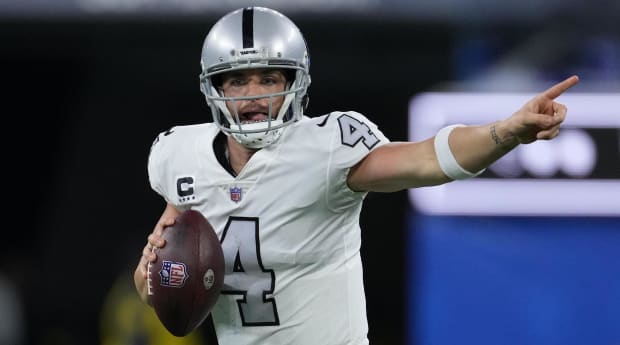
Kirby Lee/USA TODAY Sports
Key additions: QB Derek Carr, IDL Bryan Bresee, DE Isaiah Foskey, RB Kendre Miller, IDL Khalen Saunders, IDL Nathan Shepherd, RB Jamaal Williams
Key subtractions: WR Marquez Callaway, DE Marcus Davenport, DT David Onyemata, LB Kaden Elliss, DT Shy Tuttle
Where they stand: After a few down seasons with Jameis Winston and Andy Dalton, the Saints should have better play at quarterback with the arrival of Carr. If wide receiver Michael Thomas, who has played only 10 games the past three seasons, stays healthy and regains his top form, he might end up being the team’s best offseason move. The team avoided cutting Thomas after the two sides agreed on a renegotiated one-year contract. The arrivals of Miller and Williams could lead to a strong running back committee with Alvin Kamara as the top back. The Saints also re-signed tight end Juwan Johnson to give Carr another quality target. But the Saints lost many defensive starters during free agency, with Onyemata and Tuttle going to NFC South rivals. With a tight salary cap, the Saints did patchwork on the defensive line with the signings of Shepherd and Saunders. Perhaps Bresee, the team’s first-round pick, can help the thin interior defensive line, but he struggled with staying healthy during his time at Clemson.
Projected win total: 9.5
Odds to win the NFC South: +110
Final grade: C
Relying on Thomas to be available this season is a risky move for a team lacking offensive weapons outside of wide receiver Chris Olave and Kamara. It was also a gamble for the Saints to bet on Carr, who was inconsistent throughout his nine-year stint with the Raiders. Carr’s presence makes the Saints contenders in a mediocre NFC South, but this aging roster lost a handful of starters and the defensive line has plenty of uncertainty, making them long shots to come out of the NFC if they advance to the postseason. The Saints will need their familiar core of Kamara, Thomas, defensive end Cam Jordan, linebacker Demario Davis and cornerback Marshon Lattimore to make one more run with Carr under center. Perhaps the Saints’ top veterans are being overlooked, but they’re short on young cornerstone pieces. They might finally have to do a full reset if they don’t win the division this season.
Tampa Bay Buccaneers
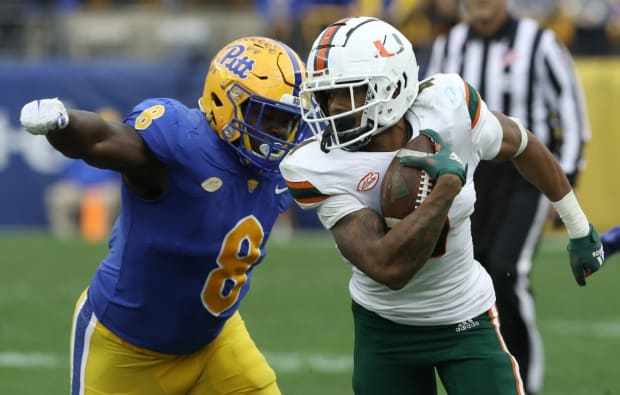
Charles LeClaire/USA TODAY Sports
Key additions: DE YaYa Diaby, RB Chase Edmonds, OG Matt Feiler, IDL Greg Gaines, IDL Calijah Kancey, OL Cody Mauch, QB Baker Mayfield, K Chase McLaughlin, S Ryan Neal
Key subtractions: S Mike Edwards, OG Shaq Mason, CB Sean Murphy-Bunting, S Keanu Neal, IDL Rakeem Nunez-Roches, OT Donovan Smith
Where they stand: The post-Brady era oddly started with the Buccaneers’ spending money on their in-house free agents, retaining linebacker Lavonte David and cornerback Jamel Dean. Instead of entering a full rebuild, the Buccaneers opted to eat $75 million in dead money to quickly repair the salary cap with hopes of making a splash next season and building off their offseason moves this year. Tampa Bay should remain somewhat competitive after keeping core players and possibly adding two impact rookies in Kancey and Mauch. The Buccaneers, however, are taking a gamble with Mayfield, who had shaky stints with the Browns and Panthers before a productive five-game stint with the Rams to end last season. Mayfield, the 2018 No. 1 pick, might have to compete with Trask, but if he wins the job, he’ll have a standout receiving unit of Mike Evans, Russell Gage and Chris Godwin. Diaby, the team’s third-round pick, could push Joe Tryon-Shoyinka for the No. 2 edge rusher position behind Shaquil Barrett.
Projected win total: 6.5
Odds to win the NFC South: +900
Final grade: C-
The offensive line still needs more reinforcements, and, if the unit struggles again, there will likely be a rotation at quarterback with Mayfield and Trask, which would signify a lost season and probably another quarterback search in 2024. Mauch will help with the run blocking, but the team neglected the running back position in the draft after averaging a league low of 76.9 rushing yards per game. Edmunds and Rachaad White likely won’t be enough to help Tampa Bay’s stagnant rushing attack. The defense appears in better shape with a few intriguing offseason moves, but it could be a long year for the Buccaneers.







